Montages for Imagery and Altered States of Mind
We’ve been looking at Montage Shots as a way to create specific effects in a novel’s scenes. Last week I discussed how a montage sequence can give the sense of time speeding by, as well as consolidate memories. There are some other great uses for the Montage Shot which we’ll look at now: creating evocative imagery and altering the sense of time.
Here’s an excerpt from a fantasy book by Roger Zelazny called The Guns of Avalon, the second book of the five-book Amber series—a favorite of mine. In Zelazny’s world, the princes and princesses of Amber, the true world, can create and move through fabricated (shadow) worlds that are only reflections and variations of the true Amber. In order to move through one world to another, these characters have to alter the world they are in one piece at a time by willing the change. They see in their minds what they want to shift, and the world is effected in response. Zelazny paints a wild canvas of imagery that literally goes on for pages, taking the reader on something akin to a video-game experience as his protagonist, Corwin, shifts his world around him to get to the one he strives for.
I turned and continued southward, confirmed in my desire to succeed. Amber I do not forget . . .
The sun became a dazzling, bright blister above my head and the winds began to scream about me. The sky grew more and more yellow and glaring as I rode, until it was as if a desert stretched from horizon to horizon overhead. The hills grew rockier as I descended toward the lowlands . . .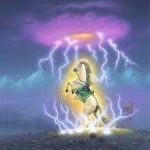
Then long shadows, the dying of the wind, stillness . . . Only the click of hood on rock and the sounds of breathing . . . Now a rippling, glassy curtain to my right as the rain advances . . . Blue fracture lines within the clouds . . . The temperature plummeting, our pace steady, the world a monochromatic backdrop now. . .
Gonging thunder, flashing white, the curtain flaring toward us now . . . two hundred meters . . . One-fifty . . . Enough!
It’s bottommost edge plowing, furrowing, frothing . . . The moist smell of the earth . . . Star’s whinny . . . A burst of speed.
Small rivulets of water creeping outward, sinking, staining the ground . . . Now bubbling muddily, now trickling . . . Now a steady flow . . .
And on it goes. But the effect of the endless short images creates just the feel Zelazny is going for, and using a Montage camera technique is the best way to do this.
Condensing a Story into a Short Span of Time
Imagery montage can also be used to tell a story in a short period of time. Flashes of key moments in an event can work powerfully to trigger emotional response. Take a look at this intense and moving scene in the movie K-Pax (2001), one of my all-time favorite films. The screenwriters, Gene Brewer and Charles Leavitt, could have just had the sheriff sitting with Dr. Mark Powell and telling him the gruesome story of Robert Porter coming home after work and finding a man in his house who had just raped and murdered his wife and daughter. How powerful would that have been on a scale of one to ten? Maybe a zero.
Instead they create a Montage of shots with Powell picturing the play of horrific events as the sheriff walks him through the house. The result is a stunning, heartbreaking tale that ends with Powell finally understanding everything he has sought to learn through the entire movie. It’s easily a ten. It is the key scene of the film, and so the writers wisely chose the best type of camera shot for the most potent effect.
SHERIFF
Had detectives come from Albuquerque to try an’ piece this one together. Accordin’ to the official story … Porter was at work … when this drifter, a Daryl Walker, came by the house. Two-time parolee, lookin’ for trouble. Know what I’m sayin’? Started out as a robbery. Wife and daughter were out back …
CLOSER ON POWELL … he gazes out past the hinges of what once was a back door. He hears Prot’s VOICE calling … “Becky? Sarah?”
AND HE FLASHES ON:
PROT’S FACE. But it is now ROBERT PORTER’S FACE. A happy, tired humanity on it as he gets out of his truck, overalls stained after a hard day’s work. He waits for his daughter to run out of the house and into his arms. Waits …
But he is met with an eerie silence. Perplexed, he heads up the stone path and into the HOUSE.
SHERIFF (V.O.)
What we gather … from forensics and all, was that this Walker brought both woman back in the house at gunpoint.
FOLLOWING PORTER—his boots trudge up the stairs, face growing worried at the silence.
PORTER
Becca … Saree?
His breathing becomes quicker, panicked, as he moves down the narrow hallway … sees a doll on the floor … an overturned watering can … he comes to the bedroom …
AS WE COME BACK TO:
POWELL’S EYES, wide, shaken, listening to the sheriff …
SHERIFF (V.O.)
Raped the wife. The shot them both.
POWELL FLASHES ON:
THE BEDROOM … blood everywhere … hands tied to bedposts … naked legs splayed … bare feet dangling over the sides of a bed.
ON PORTER … witnessing this, eyes frozen. He wears the look of a man whose universe has, in one instant, shattered. And left him in the airless blackness of space. From deep within him comes a choking sound …
SHERIFF (V.O.)
Porter must’ve come home, found Walker still here …
Porter staggers back into the hallway—to see WALKER, who, scared, takes out a gun. Dazed, but with an animal-like reflex, Porter knocks it out of his hand. They struggle for the gun, like two grunting beasts, until Porter … with an inhuman strength, grabs Walker’s wrist and pins him to the wall. The raises his other fist … a savage look coming into his eyes. A look built up over a lifetime of meekness.
AND WE STAY ON PORTER’S FACE as, with final savagery he sends the side of his fist into Walker’s neck …
SHERIFF (V.O.)
And then knocked the son’n’bitch like an Angus steer …
BACK TO:
POWELL as he closes his eyes.
POWELL
God almighty …
SHERIFF
Snapped a grown man’s neck like it was a twig.
(looks tightly at Powell)
Can’t say I wouldn’t’ve done the same.
The sheriff puts his hat on, walks out, down the rubble of back steps. Powell follows him.
EXT. PORTER HOUSE – OUT BACK – DAY
As the sheriff continues on, toward the trees, Powell lingers a moment a moment. To view a withered vegetable garden. He approaches it, astonished … to see …
The remains of a LAWN SPRINKLER somehow saved from fire. It sits there in the grip of weeds, attached to a blackened hose. Along with the scorched handles of what’s left of a child’s jump rope. And as Powell stares at it …
AN IMAGE FLASHES ACROSS HIS EYES:
A beautiful young woman, long black hair shining in the sun … and a little girl. They jump rope barefoot, innocently, happily, in the spray of the water.
THEN ANOTHER IMAGE:
Dusk. Robert porter, staggering out of the house. He kneels down, trying to wash the blood off his hands in the sprinkler, sees the jump rope …
As Powell blinks the images from his mind …
A FINAL ONE COMES TO HIM:
NIGHT … Porter stands on the bank of a rushing RIVER. He stares, as if into nothing. Overalls spattered with the dried blood of both man and slaughtered cows. With one hand … he rips off the straps, lets the overalls fall off him. With the other hand, he tears the shirt off his chest. Naked now … devoid of any human expression … he drops into the water … letting it carry him away …
SHERIFF (V.O.)
We found his clothes here. Probably where he jumped in …
EXT. RIVER – DAY
Powell stares into the rushing white water. He and the sheriff standing, carefully, on the bank.
Novelists can do similarly, using brief flashbacks while keeping the POV character in the present action. The reason backstory and flashbacks are often discouraged is they stop the present action and take the reader out of the current story. But when done like this, they only enhance the present moment, the montage of images each short and emotionally packed to deliver a punch to the gut.
Is there a place in your novel where your character learns something startling that happened in the past? Consider using the Montage sequence for impact.
Montage Images to Imply State of Mind
Here’s a brief but effective use of Montage in Meg Moseley’s book When Sparrows Fall. What better way to convey the disjointed sense of time and events as her character Miranda is waking up in a hospital after a serious accident:
Miranda struggled out of a groggy sleep and recalled a man standing beside her bed. “It’s all right,” the stranger had said. “I’ll take care of the kids.”
No, not quite a stranger. Jack. Unless she’d dreamed him.
What was he doing in her bedroom?
She fingered the bedding. It was wrong. A fuzzy blanket instead of her soft quilt and smooth sheets. And her hand hurt.
Everything hurt.
She fought to open her eyes. Her head drummed with a dull ache that was pierced by daggers when she made the slightest movement. She turned anyway and saw closed blinds on an unfamiliar wall. Everything kept spinning and thumping.
She closed her eyes. The throbbing continued. Desperate to know where she was, she turned slowly in the other direction before she opened her eyes again.
A pale blue curtain hung from the ceiling. A room divider.
A hospital room. That antiseptic smell. That quiet bustling.
Past hours came back in bits and pieces. Intense pain encasing her chest, her shoulder. Ice packs, bandages, IV lines.
A move from one room to another. A nurse who hummed and a roommate who snored.
A doctor who pried her eyelids open and mumbled at her.
Something rustled. The room divider swayed. A thin woman in a green shirt loomed over the bed, out of focus, and fiddled with the I.V. bag.
“You awake, hon?”
“I . . . I think so.”
The nurse smiled. “Maybe not, then. Do you remember what happened?”
Miranda lay still, trying to sort memory from nightmare, and nightmare from dream. “I fell?”
“You sure did. You’ve had a concussion, not to mention a collapsed lung and some broken ribs and a separated shoulder. Pretty impressive road rash, too. Did you know that?”
Moseley uses short, clipped phrases to help give the feel of a glimpse or impression of memory. Miranda can’t recall the details, but has faint recollections of the ice packs, the move to another room, a nurse who hummed, a roommate who snored. Moseley could have used full sentences and had her recall all these things in more of a continuous flashback but instead chose to use a Montage to give the feel she wanted in this scene. Keep this camera shot in mind when you want quick and fleeting images going through a character’s head.
This week, look again at your novel you’re working on and think of a place or two in which you may want to create some beautiful imagery through the use of a Montage sequence. Maybe your character is traveling and looking out a window and seeing the scenery. Maybe she’s a fashion designer and imagining all the beautiful gowns she’s going to design for the fall show. Do you have a character who’s drugged or injured? How might he think in broken thoughts, expressed by a montage effect? These are just a few ideas you can play with. Using a Montage in your novel can supercharge a scene with creativity and visual power!

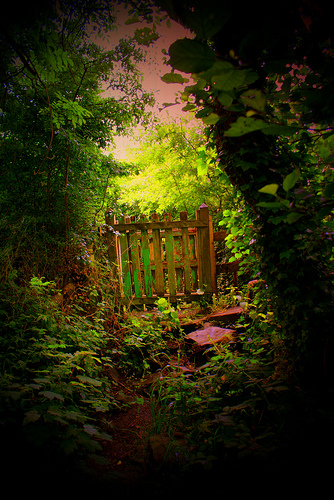
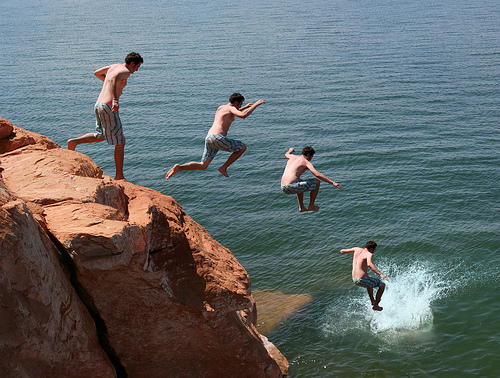
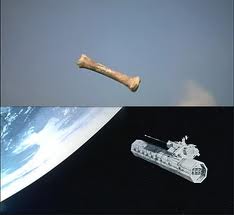
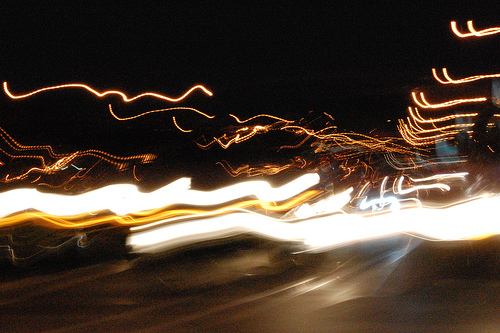


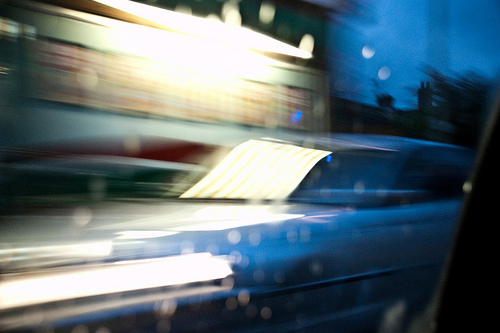




Thanks for including an excerpt from my writing. I remember having fun writing that scene, using it as a way to condense time for the reader and give some clues about Miranda’s condition without getting into too much detail.
But wow! The screenplay excerpt gives me chills. The screenwriters chose the perfect visuals to make me think I’m right there, seeing it with my own eyes. The fantasy excerpt is amazing too.
Very interesting take on transferring the idea of photomantage to writing. As a photographer who also writes, I had never thought about this in particular, but I do see things in shots. I’ll have to give it more thought, just wanted to say, looking forward to the next posts.
Thanks for sharing:) Very insightful article!